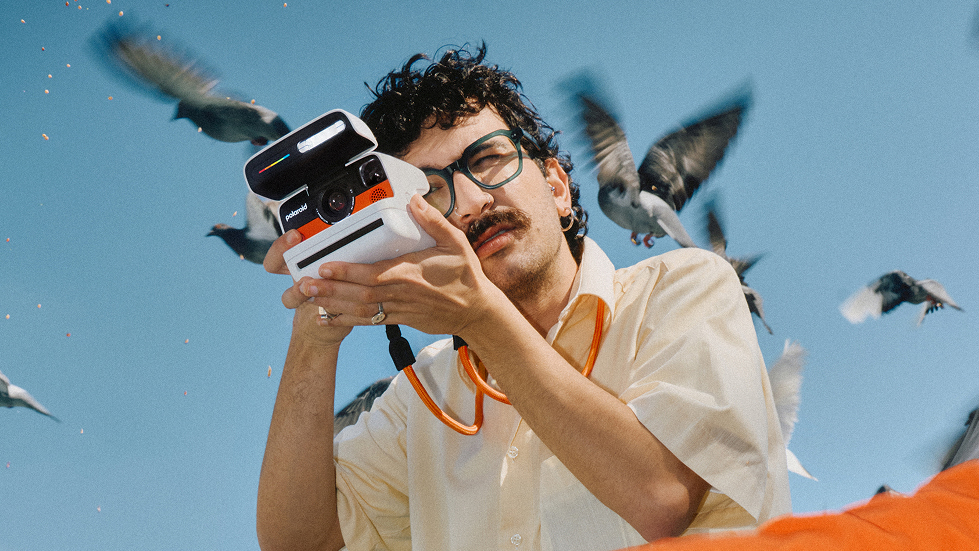The best lightboxes for photographers and artists
View slides and negatives, trace drawings and more, with the best lightbox for photography and art
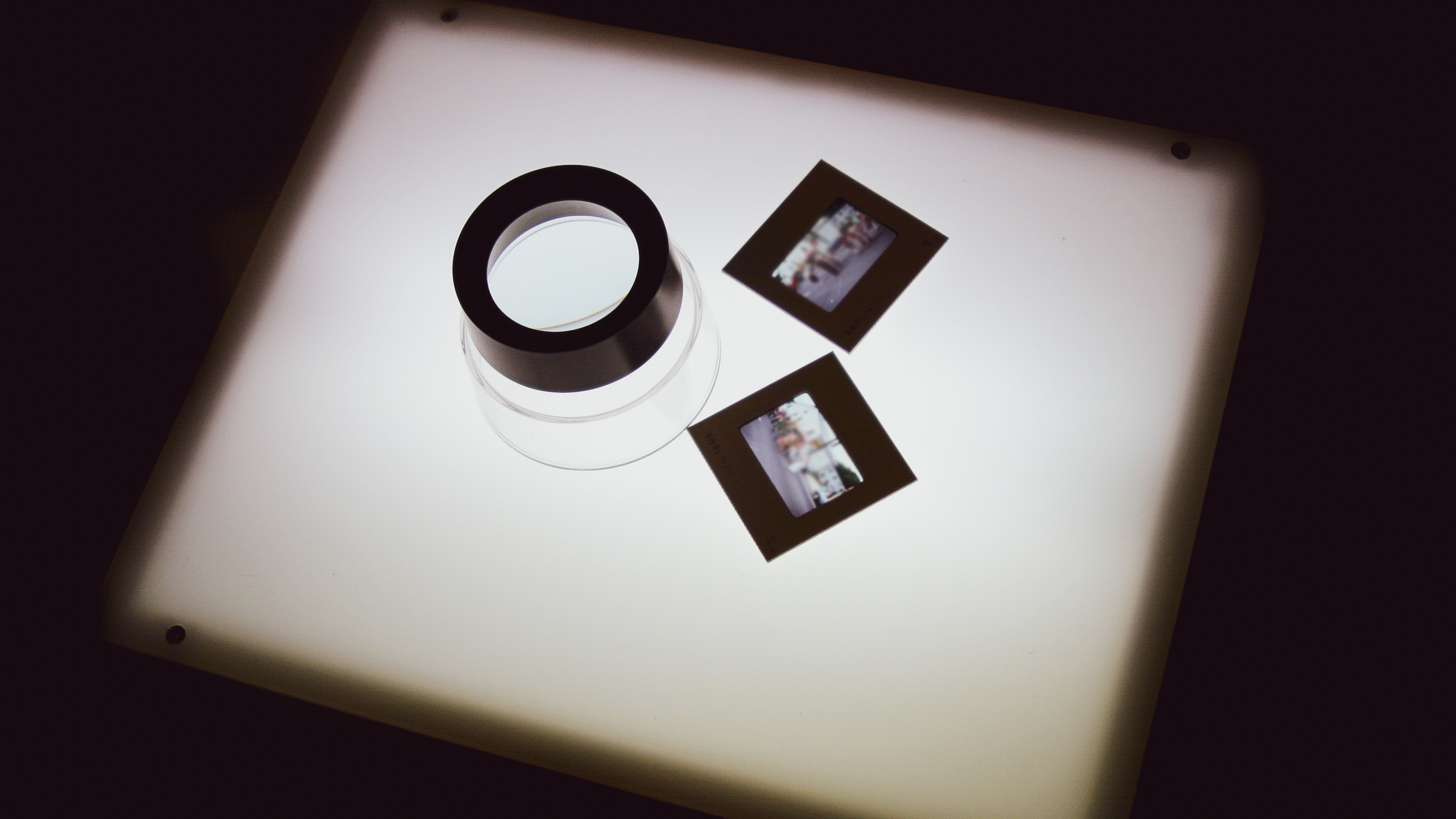
The best lightbox is a must-have for any photographer shooting with film cameras, or who has boxes of old slides and negatives to sort through. Like the best light tents, a light box can also be used as an extra light source when shooting things like food photography in the studio.
And it's not just useful for photography. You can also use a lightboxes to trace artworks, diagrams and photos. So for the relatively low cost, you're getting a lot of bang for your buck overall. We've put our experts to work, and they've brought together the best lightboxes available today in the article below.
Note that where sizes are referred to as A3 or A4, A3 is roughly equivalent to the Tabloid/Ledger paper size and A4 is roughly equivalent to Letter. (See our FAQ below for more details.) Finally, you might also be interested in our guides to the best slide viewers and the best film scanners.

Gavin has over 30 years of experience writing about photography and television. He is currently the editor of British Photographic Industry News, and previously served as editor of Which Digital Camera and deputy editor of Total Digital Photography.
The Quick List
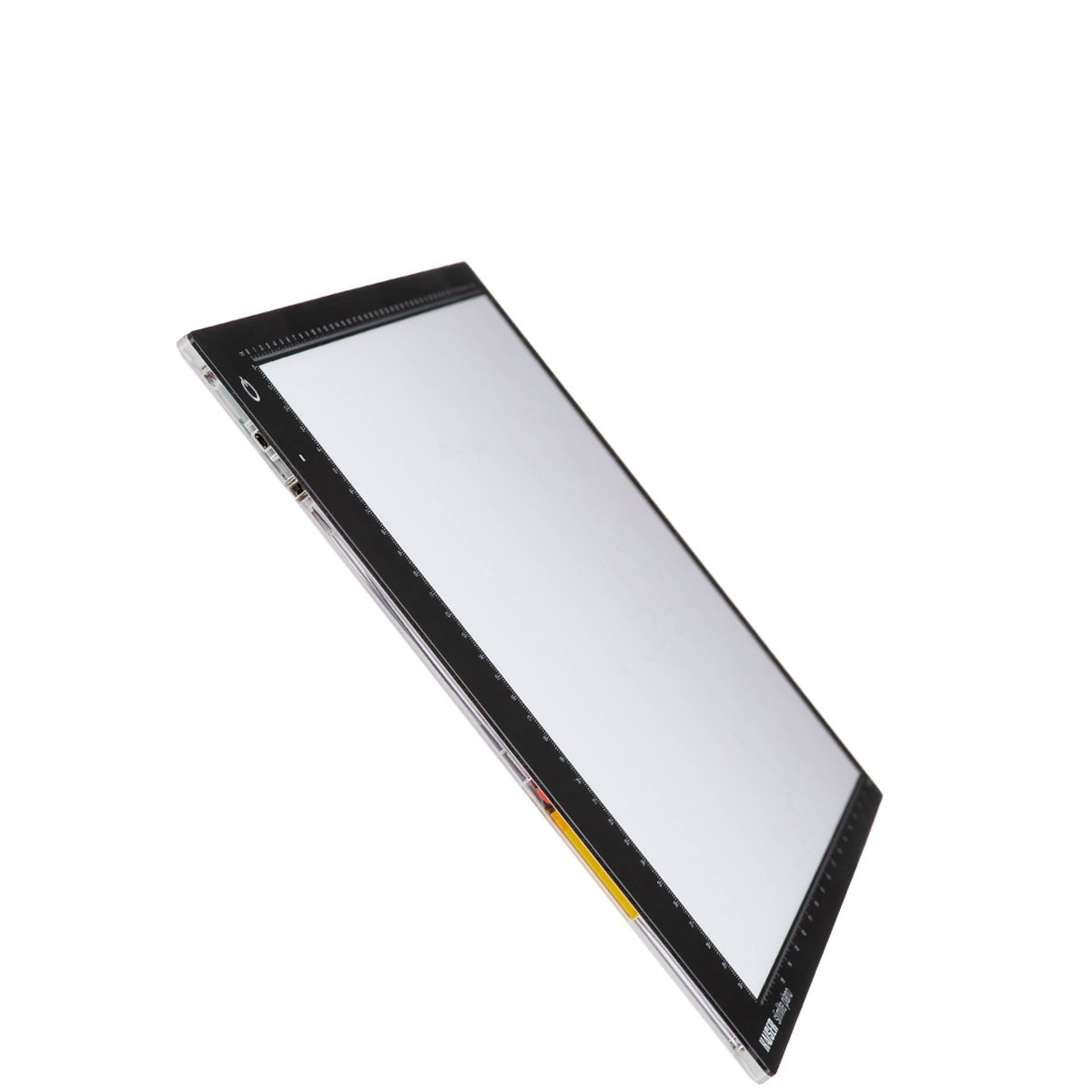
Here's our top pick overall. Sized at roughly A2, the Slimlite Piano is slim with a built-in battery. Details include touch control and adjustable brightness.
Read more below
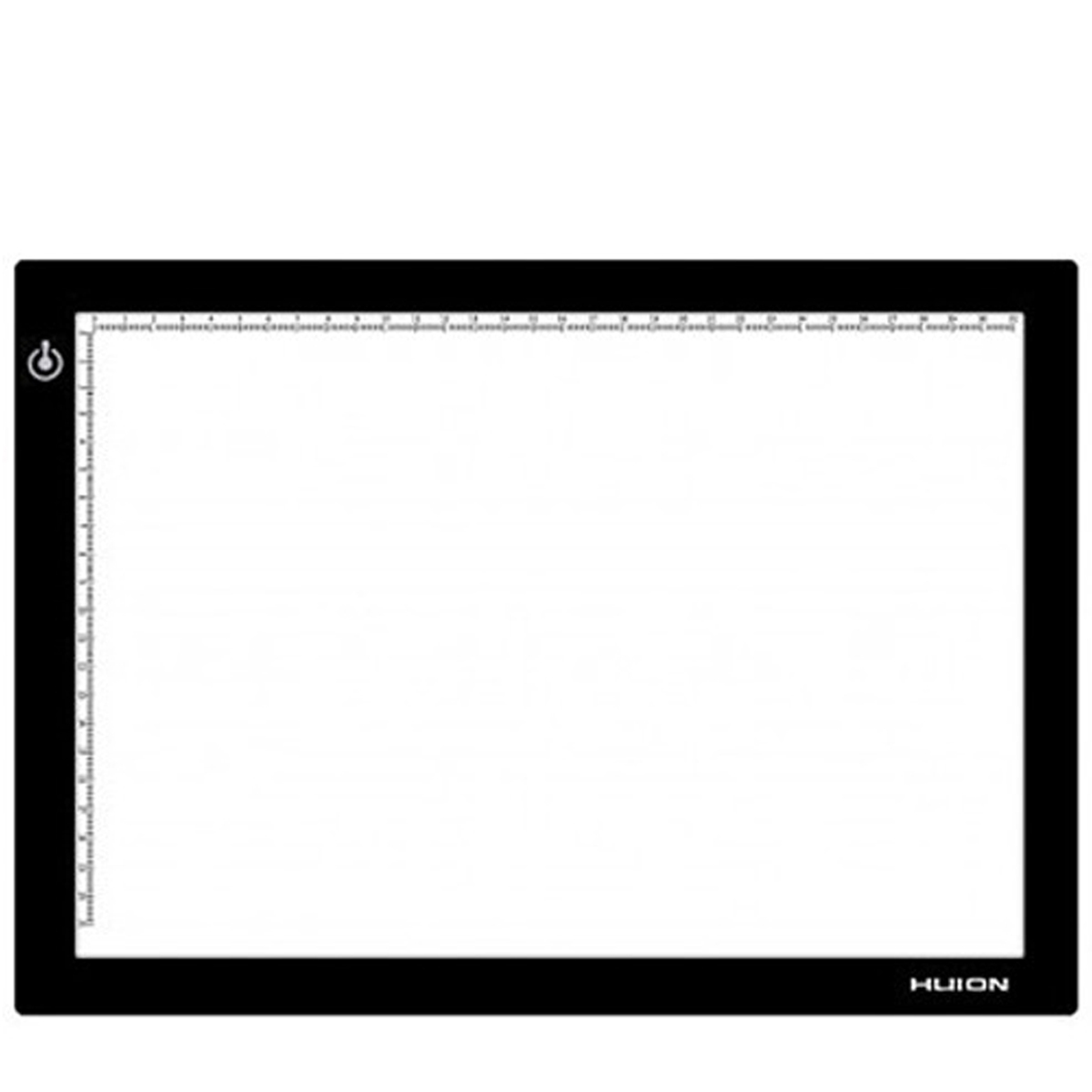
Want a small lightbox at a budget size? At approximately A4/Letter in size, this lightweight option remembers the last brightness setting you used, and is pretty slim.
Read more below
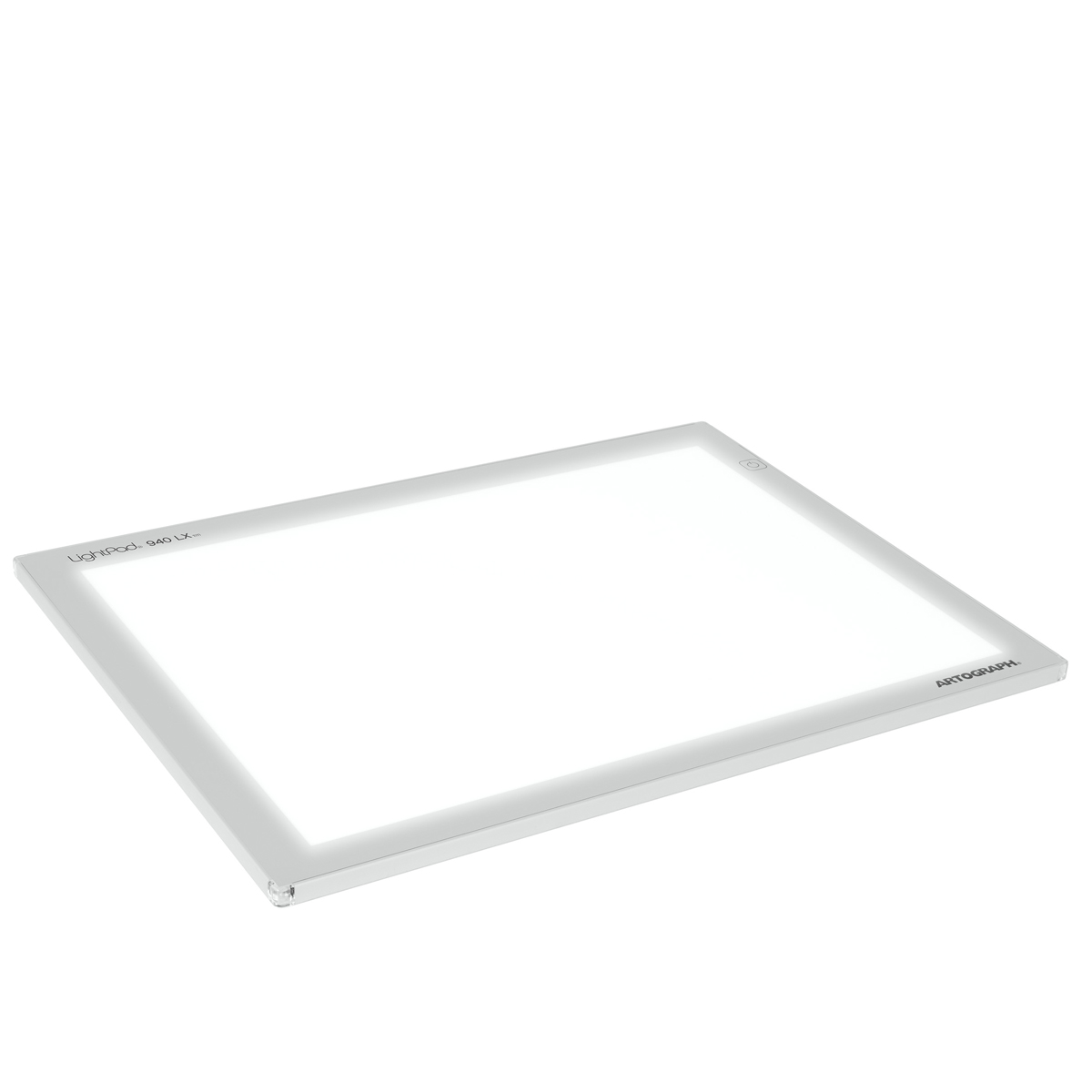
Seeking a medium-sized lightbox? This A3/Ledger model looks cool in its aluminum frame, and its LED light keeps it cool to the touch as well.
Read more below
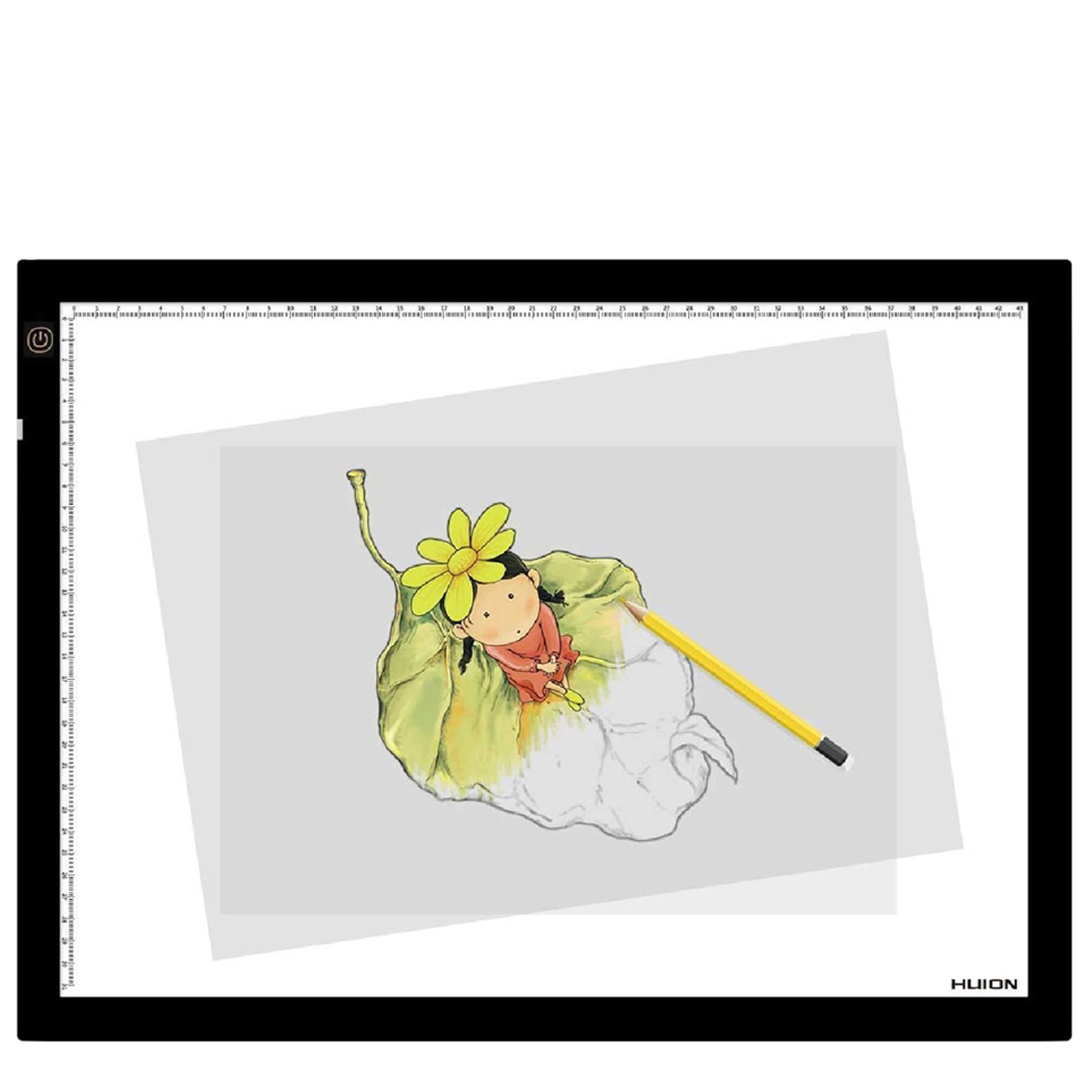
If you're short of cash, and want a medium-sized lightbox, go for this A3/Ledger design. There are brighter choices than this one, but it's great value for the price.
Read more below
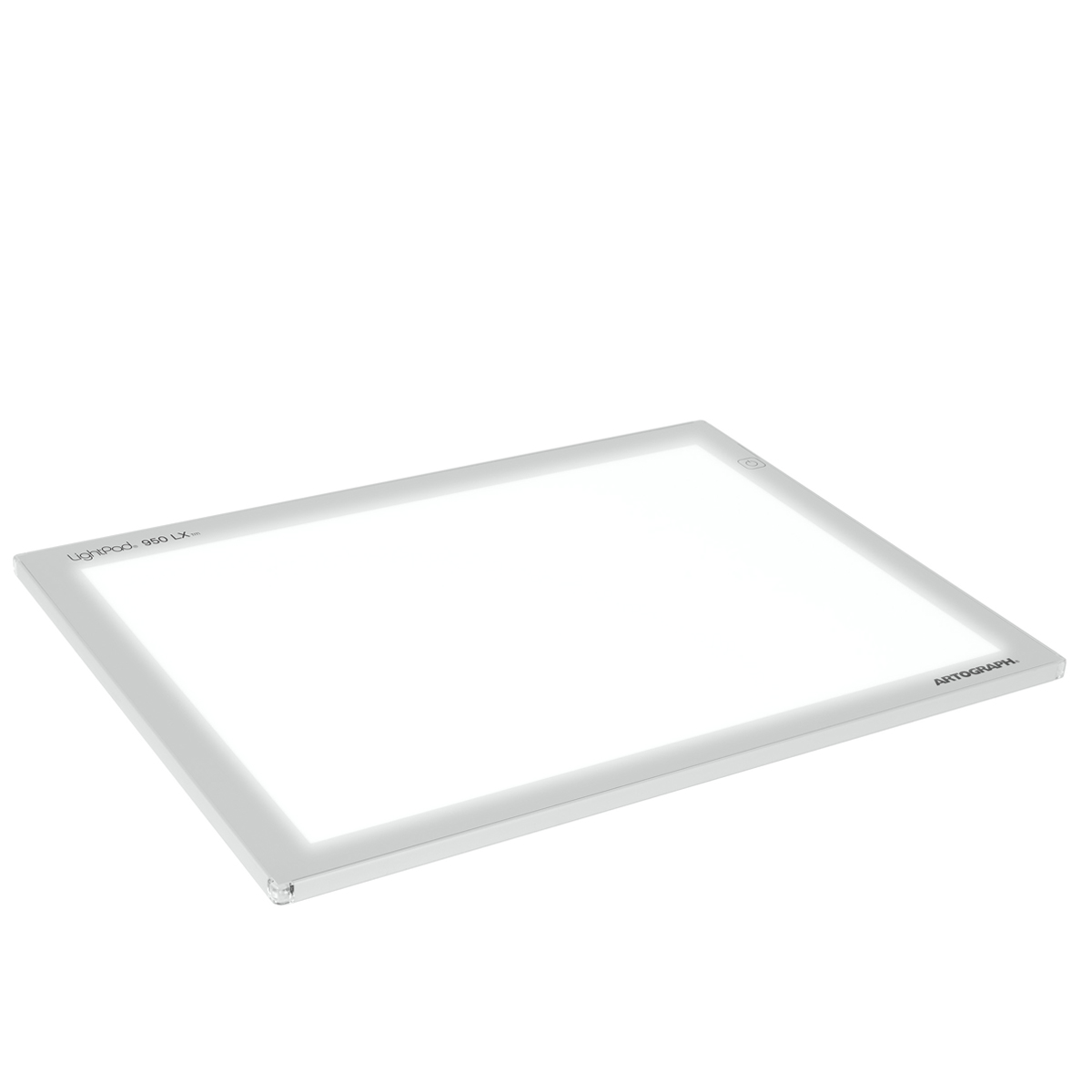
Looking for a large lightbox? This one is double the size of the 940 LX (our number 3) and built to last. Note, though, that means it’s quite heavy.
Read more below
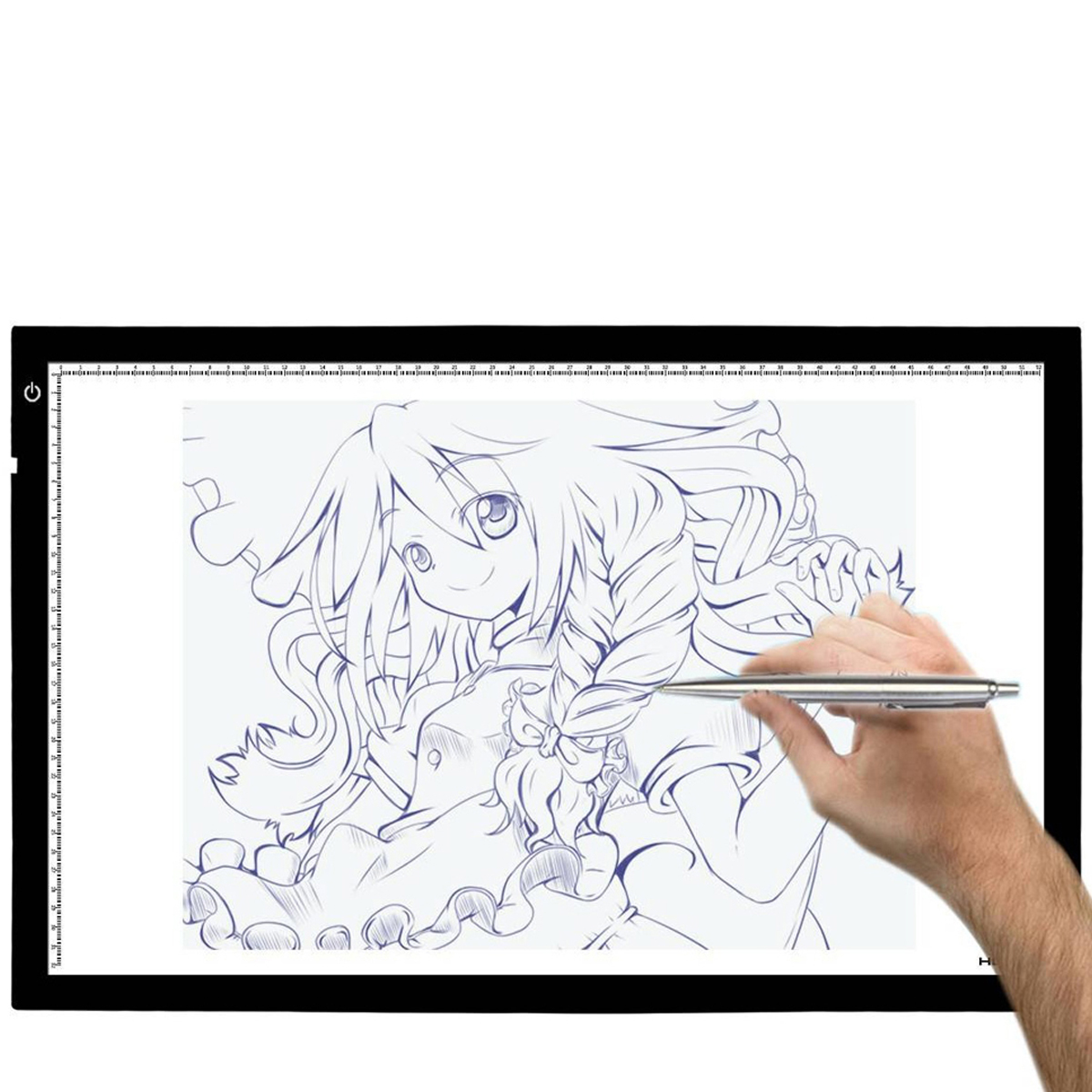
Want to make art? This is another A2-sized monster, with a respectable brightness rating of up to 2,000 luxand a memory function that will handily remember your light setting.
Read more below
View the full list ⤵
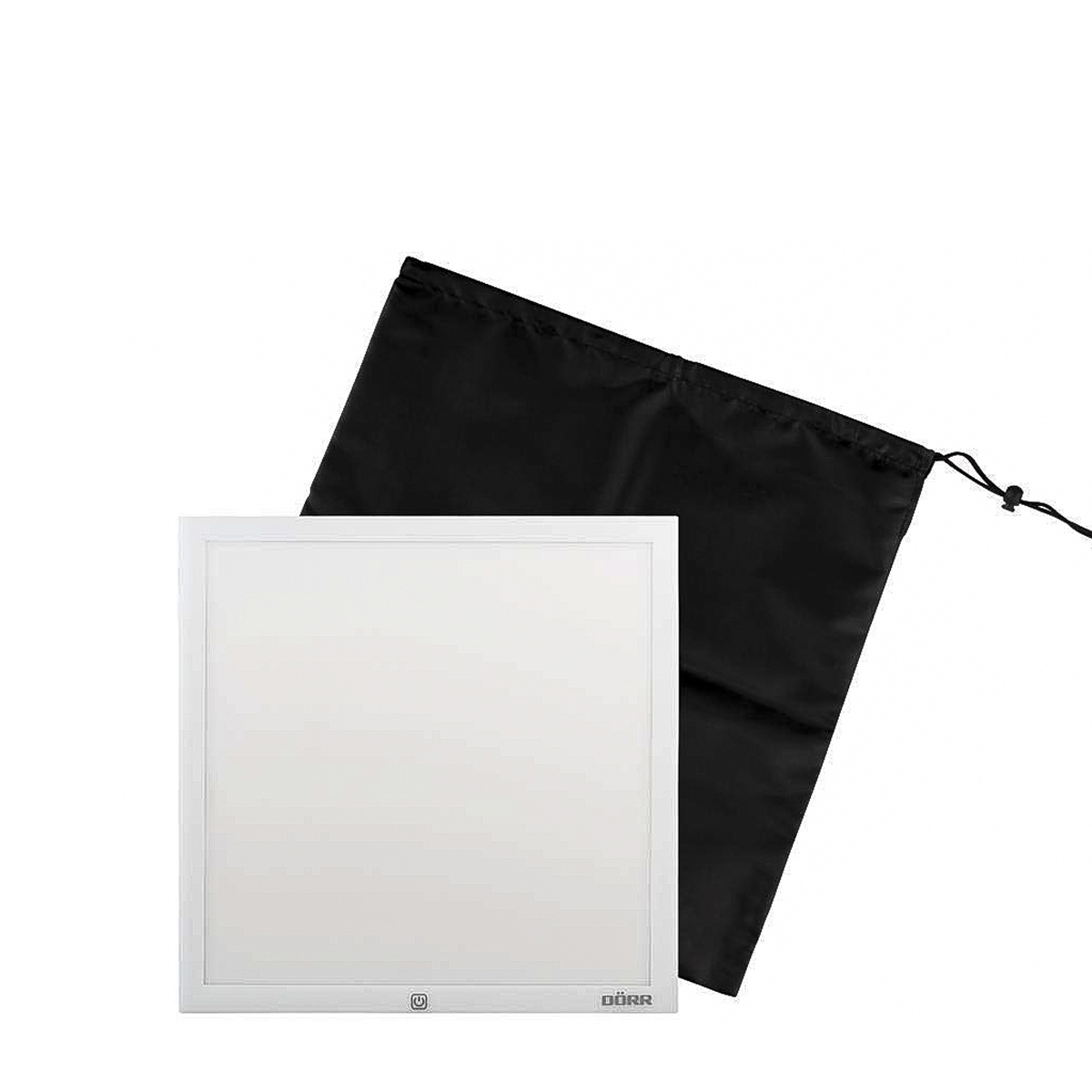
Unusual touches here include its square proportions and daylight color balanced lights. It’s thin, but it ain’t flimsy.
Read more below
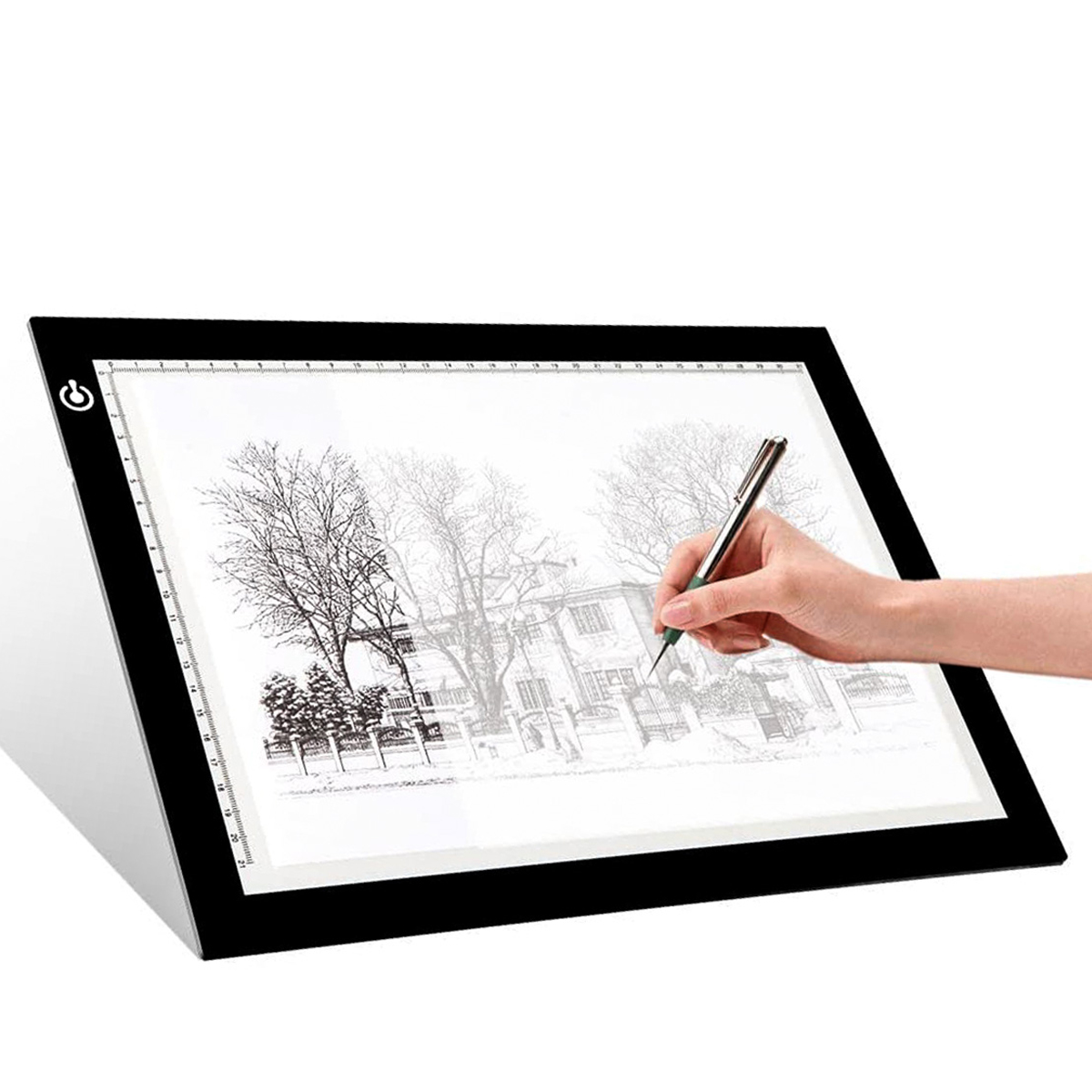
Charge up this A4/Letter lightbox using your laptop or power pack, thanks to a USB connection – and great brightness too.
Read more below
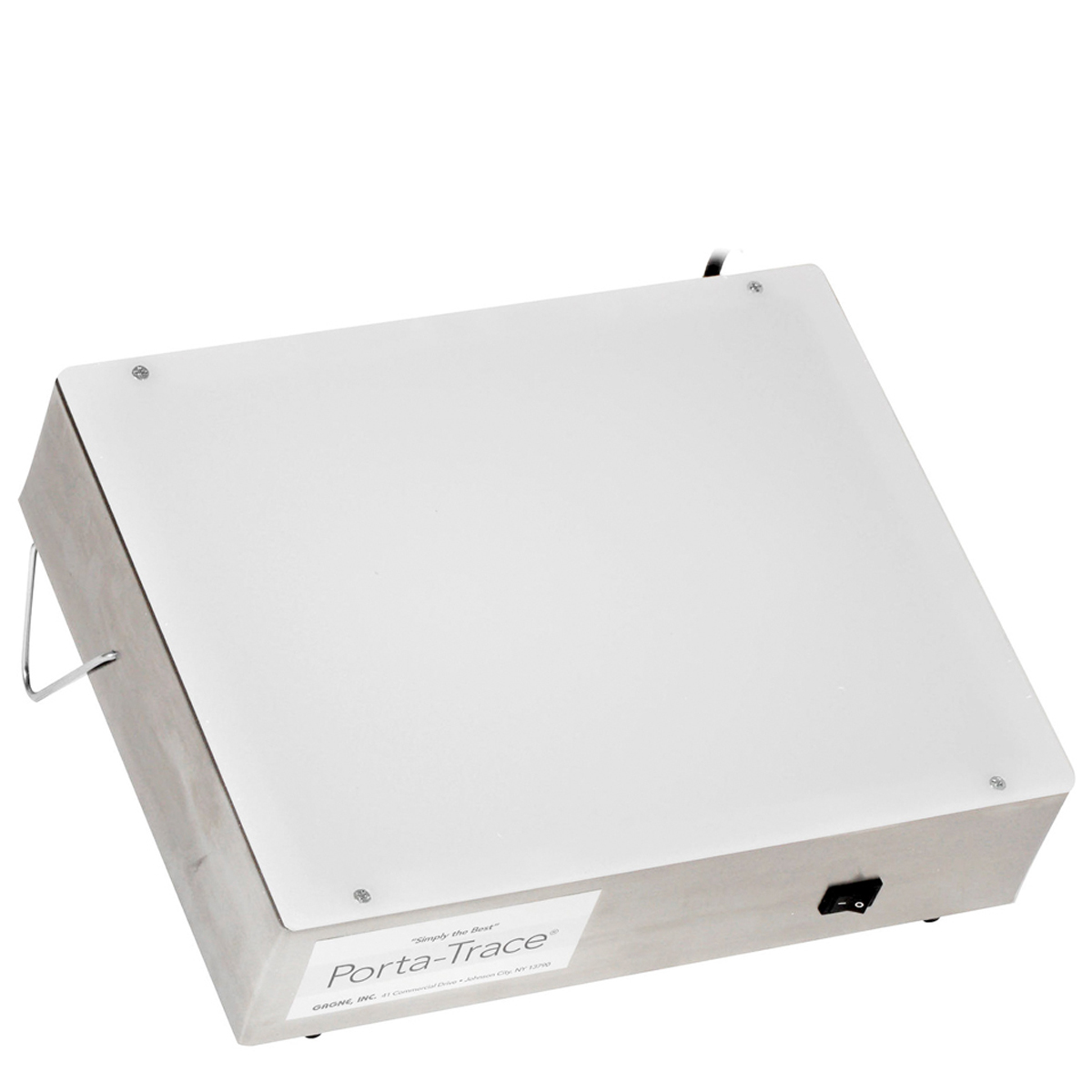
This A4/Letter lightbox uses a traditional design that makes it able to take some knocks, and its stand makes it easy to angle.
Read more below
Best lightbox in 2025
Why you can trust Digital Camera World
Best lightbox overall
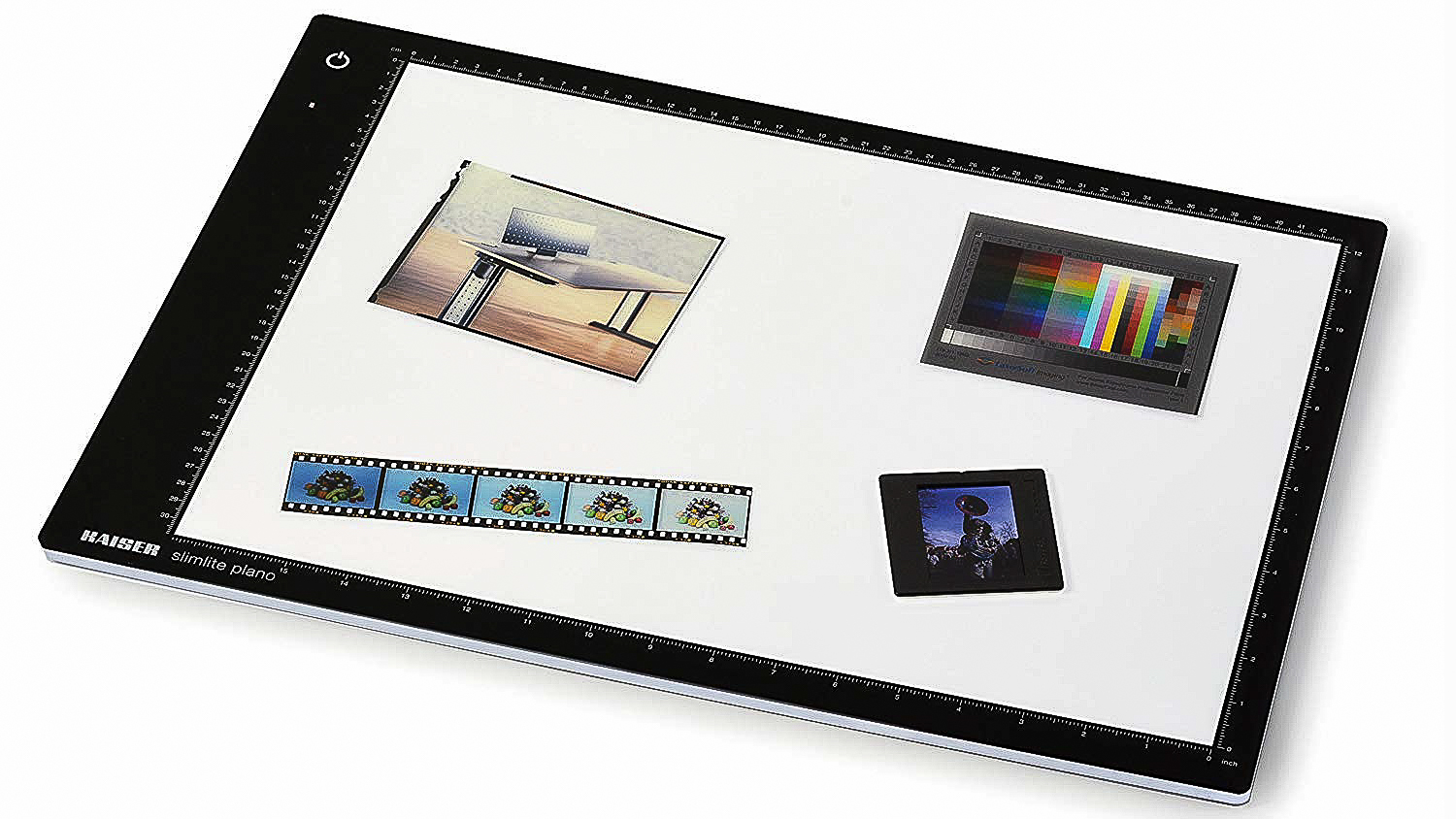

1. Kaiser Slimlite Plano lightbox
Specifications
Reasons to buy
Reasons to avoid
Made by Kaiser, a well-known photo accessory brand among film users, this sleek-looking higher-end unit is ideal for sorting out and reviewing slides and transparencies. With a generous working area of 16.9 x 12.2in, you can power it either by the mains or battery.
Features include touch on/off control, adjustable brightness dimming, and USB connectivity. The screen surround features a scale provided in centimeters and inches. And if you want to work remotely, the built-in battery will last for up to 1.5 hours at full power, or longer if the screen is dimmed.
At a slim 8mm, the screen also boasts a very slim pancake-like profile, while the large landscape format viewing area avoids having to cramp your transparencies when viewing several at a time. All this makes the Kaiser the best lightbox for photographers overall.
Best budget small lightbox
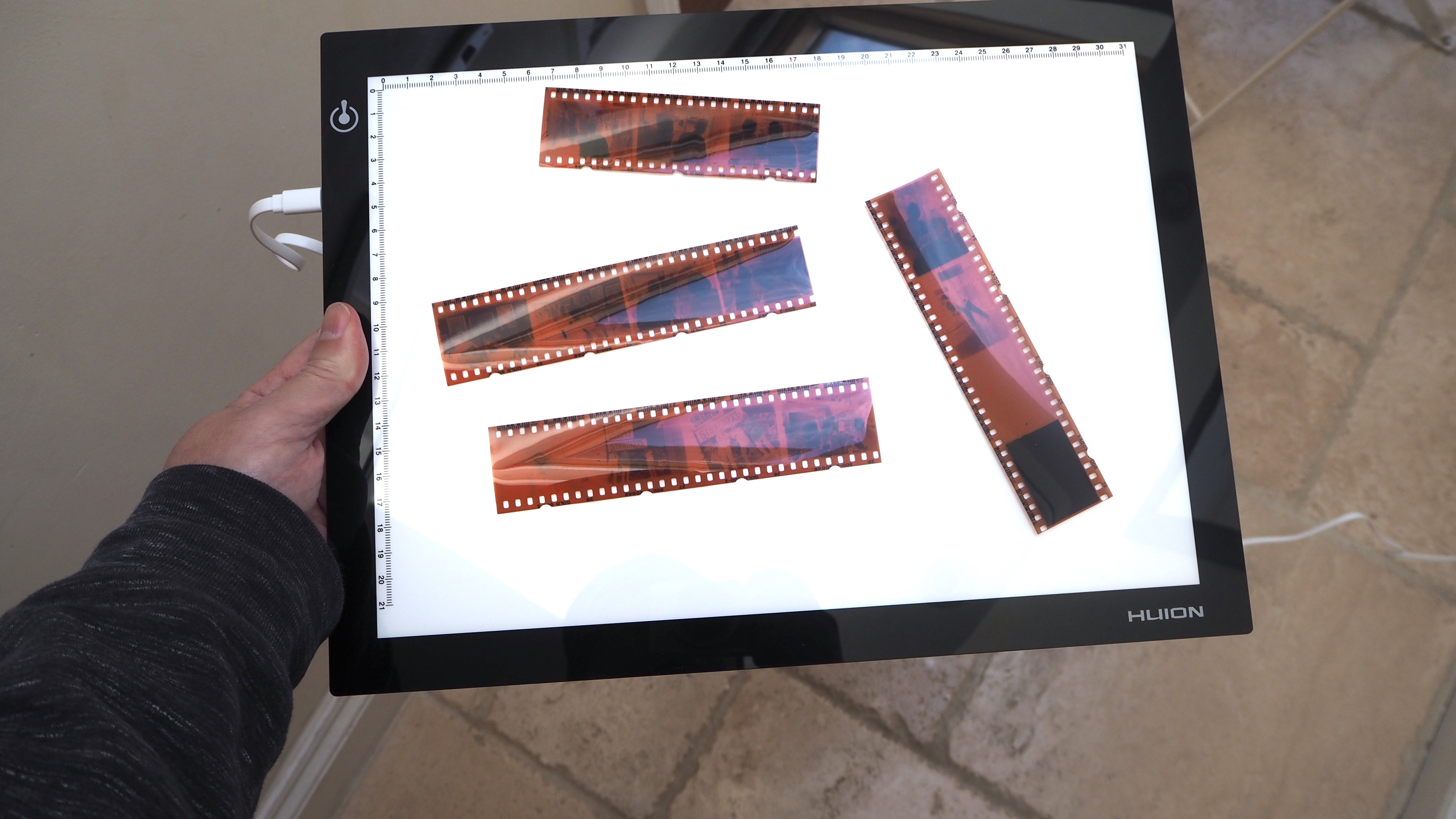
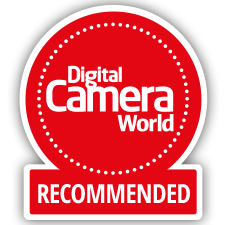
Specifications
Reasons to buy
Reasons to avoid
Want a cheaper option than our number one pick? Huion is a leading manufacturer of graphics tablets, and its lightbox provides excellent value.
The ‘active’ illuminated area of the box/pad is a very useable 12.6 x 9 inches (so basically A4/Letter) and, as with others here, the brightness is dimmable via the holding down of its on/off button. It also ‘remembers’ the brightness it was set to when last used – so you don’t have to make personal adjustments every time.
Suggesting that the pad provides the potential for 24-hour usage, its lifespan is estimated at 50,000 hours. Measuring a very slender 0.4cm in depth, this solution is also one of our lighter options at just 599g, so it could double as an additional light source for your photo shoots, if required.
Read our full Huion L4S review for more details.
Best medium-size lightbox
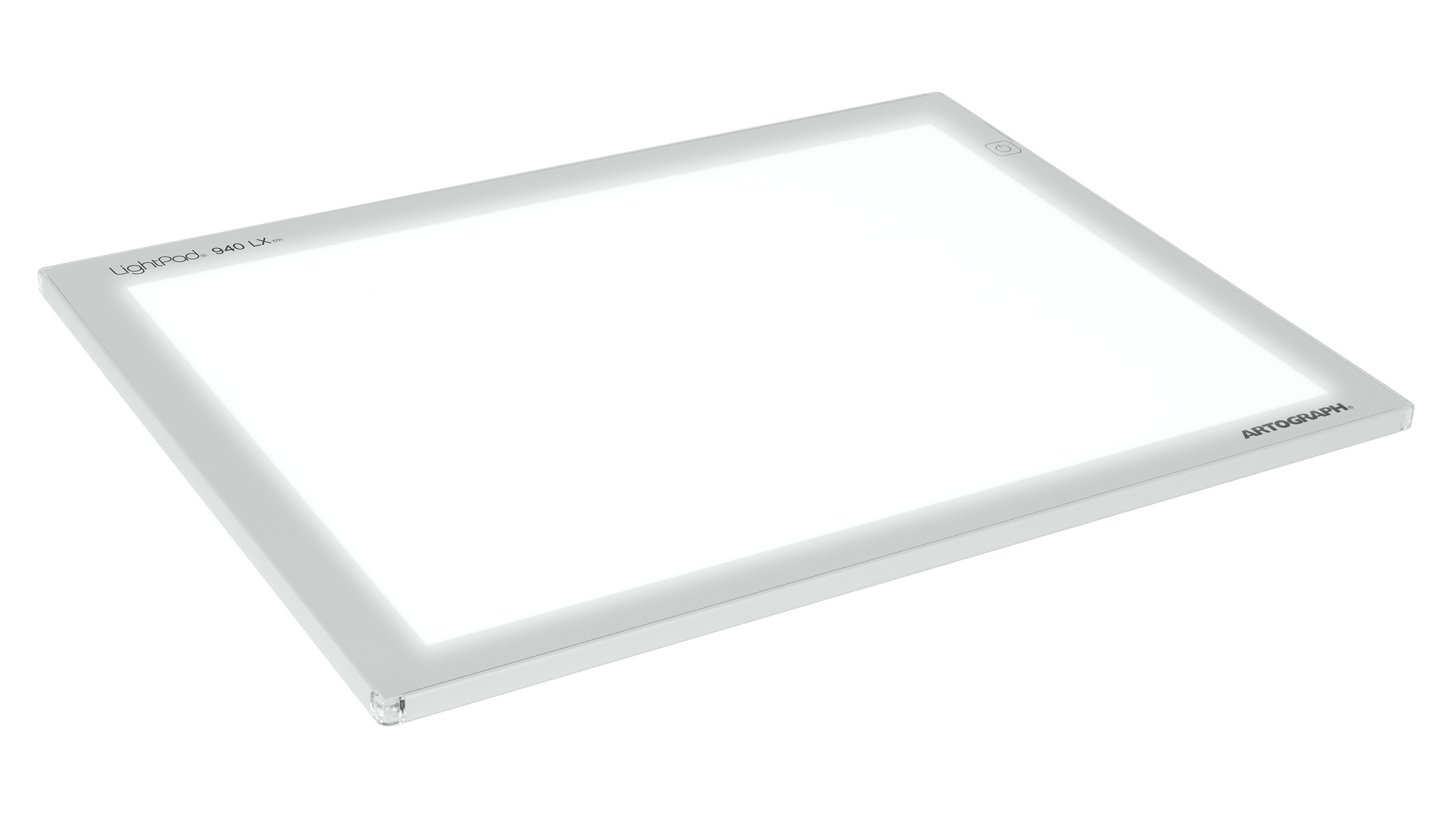
3. Artograph LightPad 940 LX
Specifications
Reasons to buy
Reasons to avoid
Seeking a large working area? This light box is an excellent choice. It comes in at 12 x 7 inches, housed within an attractive aluminium frame with chrome steel corners. Being an LED device, it's always cool to the touch, and casts an even light, with brightness variable from 1000-5000 lux. It comes with a mains adapter, protective storage sleeve and one-year warranty. Note that it's one of the heavier devices on our list, though, at 2kg.
Best budget medium-size lightbox
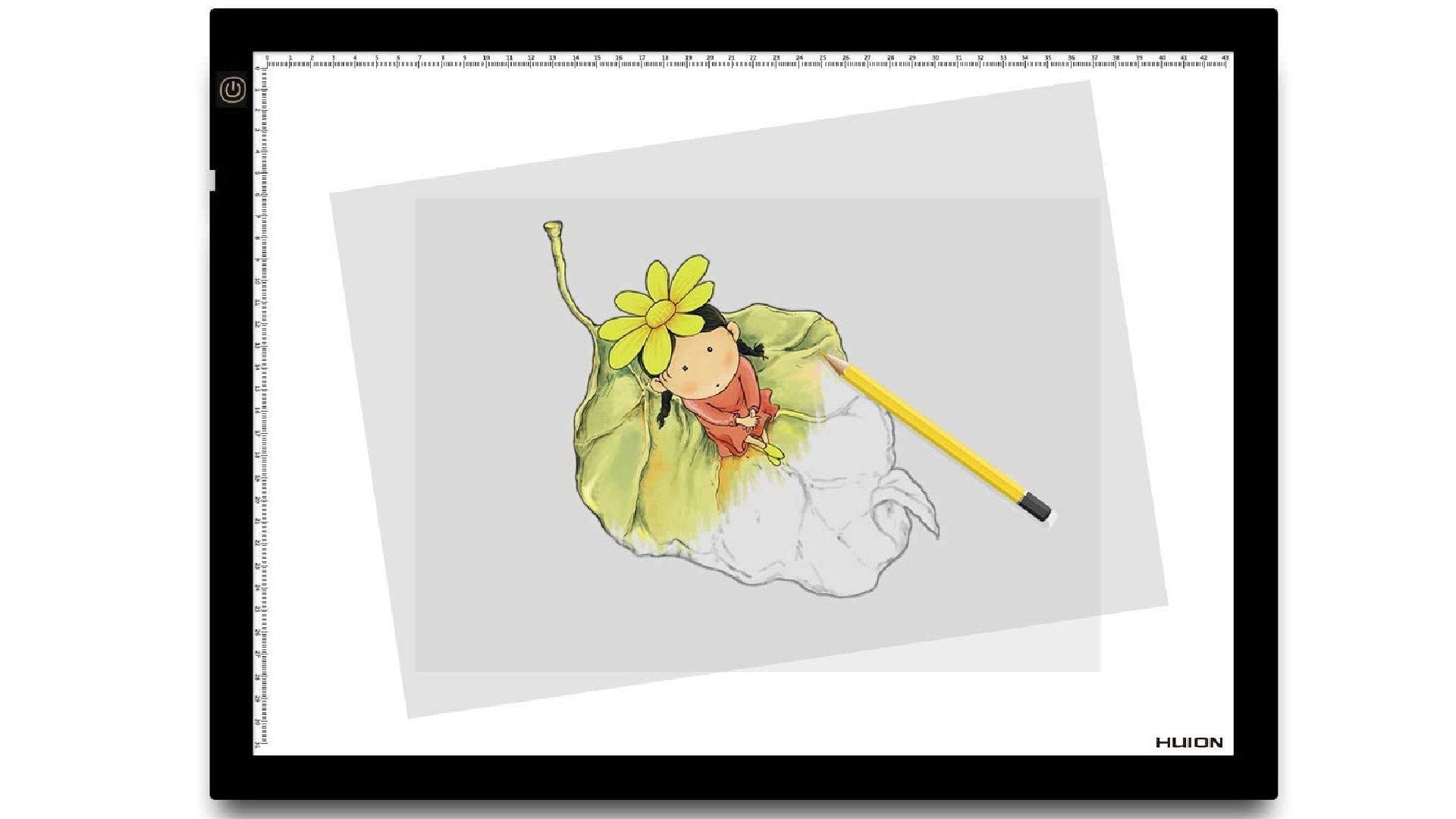
4. Huion LB3 LED lightbox
Specifications
Reasons to buy
Reasons to avoid
On a tight budget, but need a large working area? This is a larger version of the Huion LED light box (our number 2 pick) which offers an A3-sized space for your slides, negatives and tracing. It is still a lightweight choice, and has a rechargeable option, making it ideal for travelling, or for use as a light source. It has an adjustable brightness with a maximum output of 1500 lux.
Best large lightbox
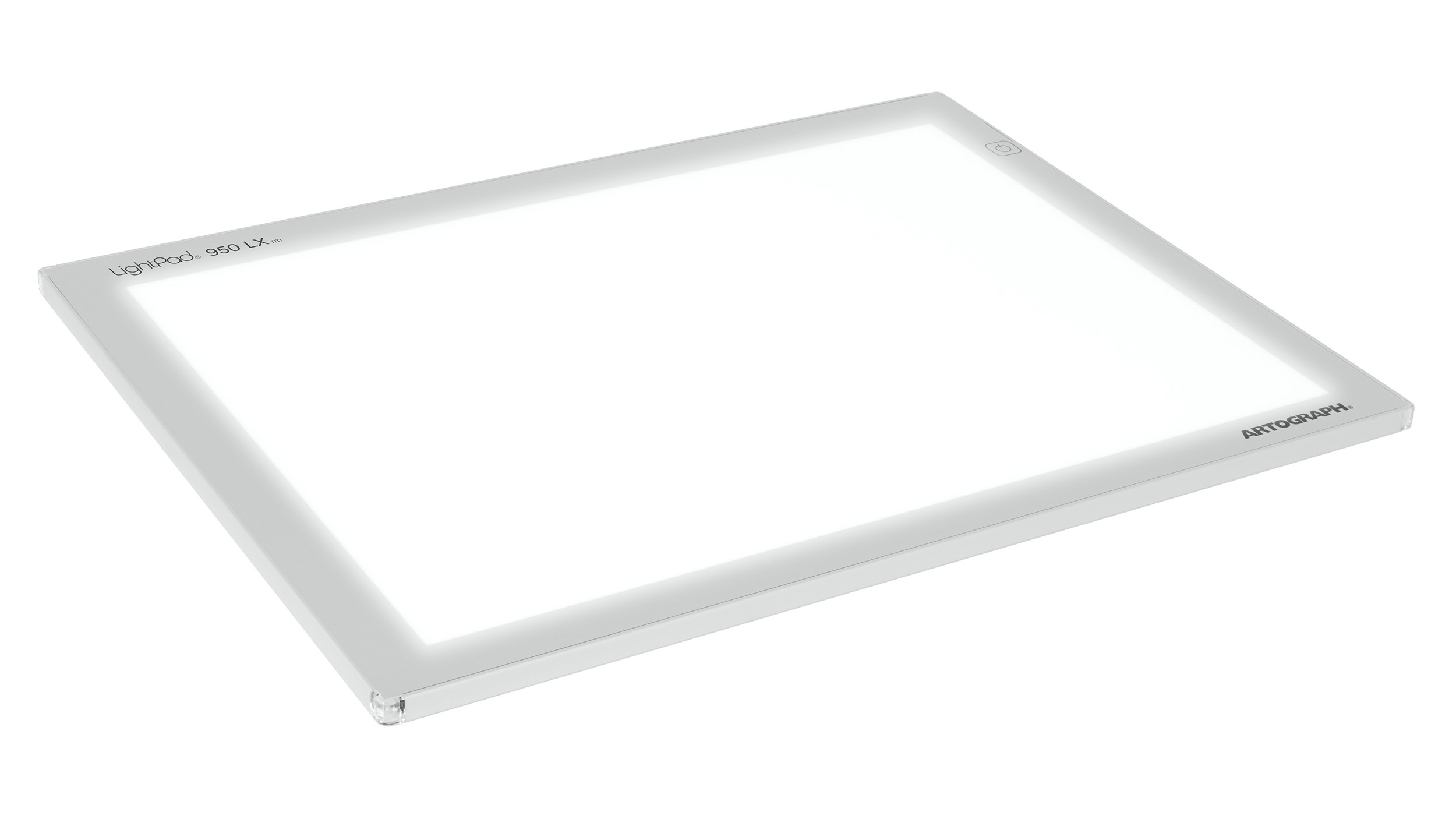
5. Artograph LightPad 950 LX
Specifications
Reasons to buy
Reasons to avoid
This is the big brother of the Artograph LightPad 940 LX (number 3 on our list), offering a massive working area that is twice the size. With an double-layer acrylic A2 screen measuring 24 x 17inch (432mm x 610mm) it's great for big tracing jobs – or for comparing large-format film negatives.
This is a mains-operated device with a robust aluminum frame which is best suited to a studio or office setting. It's pretty expensive, though, so if it's beyond your budget, you may prefer number 4, above.
Best lightbox for artists
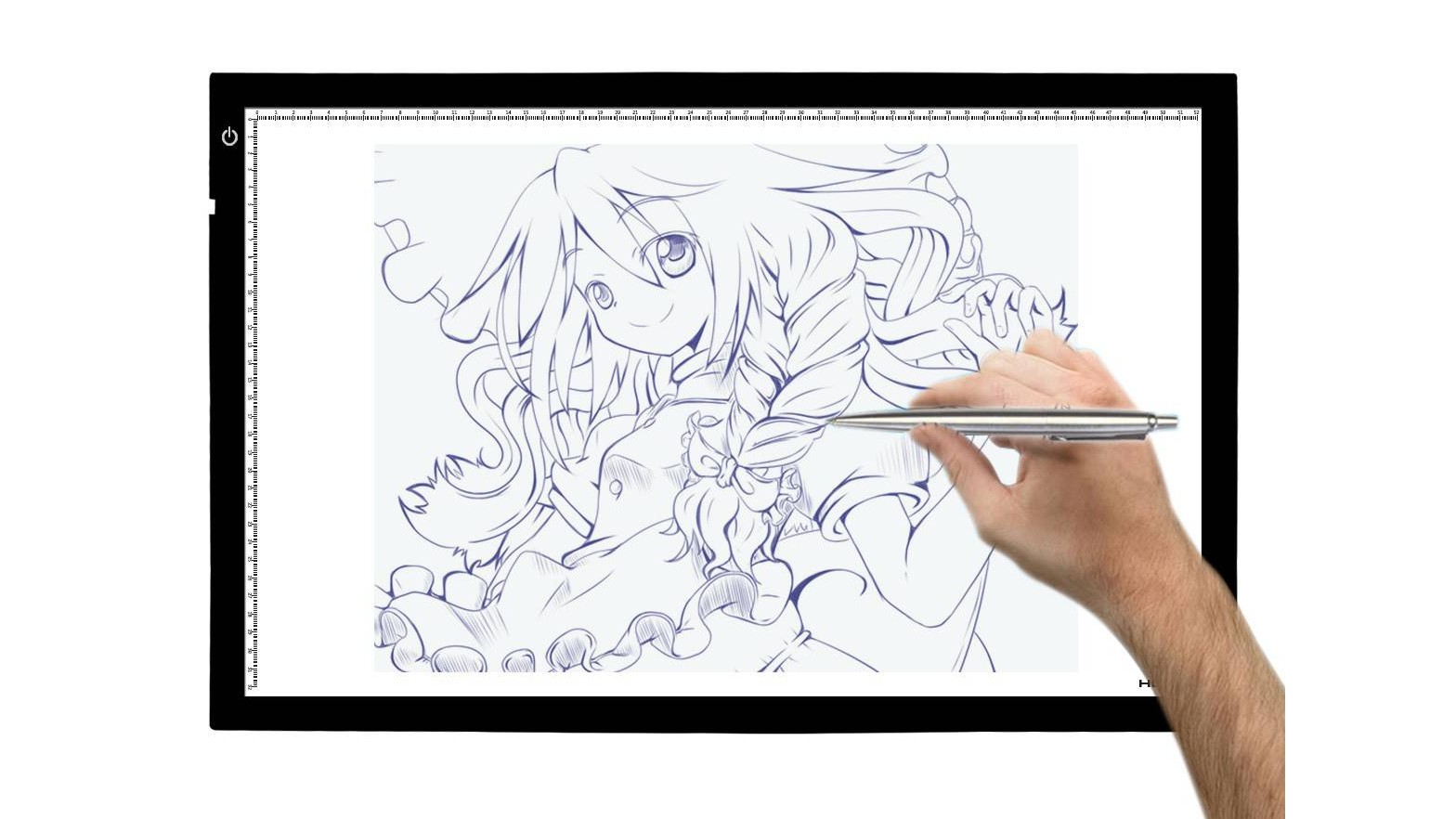
6. Huion A2 LED Light Pad
Specifications
Reasons to buy
Reasons to avoid
If you have very large slides you need to view, or large images you want to trace, here's our top choice. Huion's largest light box measures a hefty 56.9 x 37.1cm (22.4 x 14.6 inches), with a working area of 51.9cm x 32cm (20.5 x 12.6 inches). Despite the title, that's not quite A2 size, but it's not far off.
The brightness of up to 2,000 lux can be adjusted gradually, and there's a memory function for when you reach the perfect level of brightness and want to easily select this at a later date. There's also a handy 2m (6.5 feet) long cable to plug into the wall, and its LED lamps promise up to 50,000 hours of use.
Best slimline lightbox
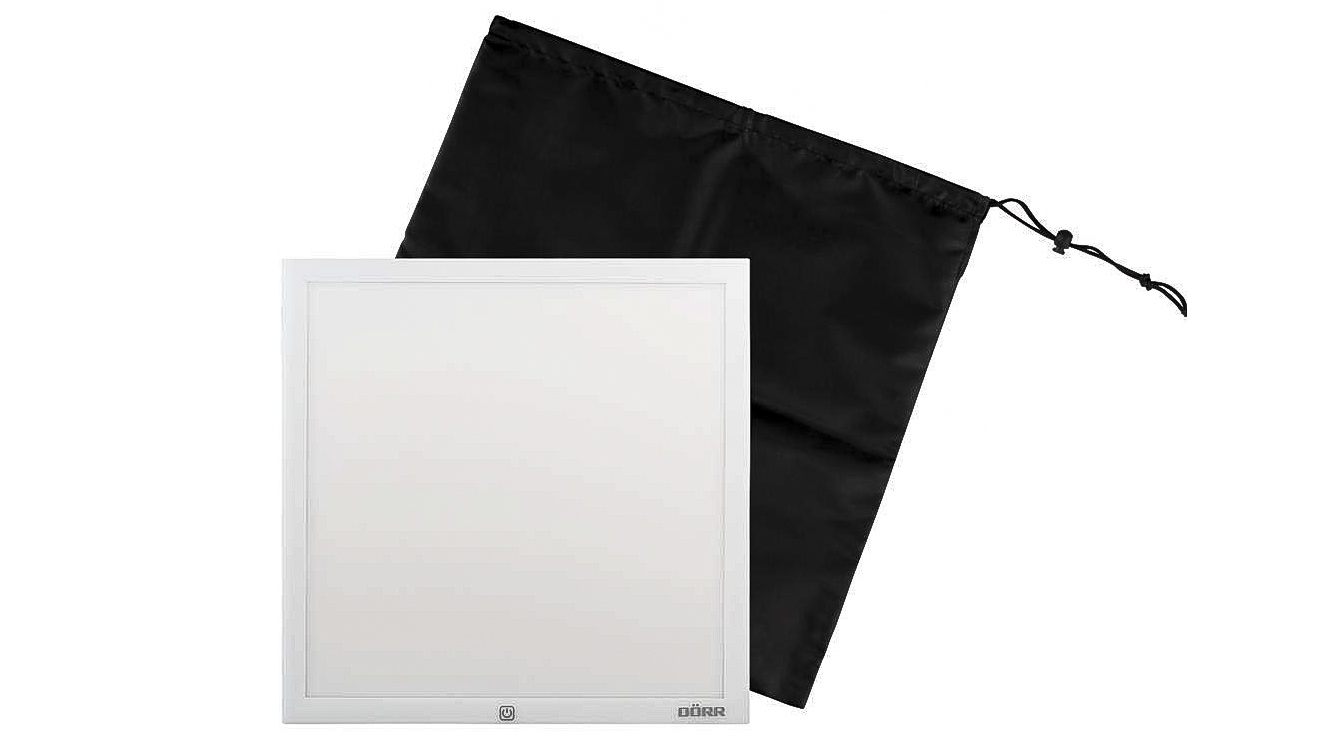
7. Dörr LT-3838 LED light box
Specifications
Reasons to buy
Reasons to avoid
While it's not easily available in the USA, this dedicated daylight color balanced solution from Dörr for viewing slides and negative film has much to offer readers in the UK and Europe. Specifically, its ultra-thinness.
It measures 38 x 38cm with an illuminated acrylic panel size of 34 x 34cm – so, just slightly longer than a conventional school ruler. The device utilizes energy saving LEDs – the advantage being that this is a constant and consistent light source that never gets warm to the touch.
Once again the unit is dimmable to avoid eye strain, via a press and hold of the on/off button. Like its competitors this 14.4 Watt light box is also very slim at just 0.8cm thick, while, in weighing 1.12kg in total, it feels neither flimsy nor prohibitively weighty. Incidentally, this offering sits between two other available lightbox sizes from Dorr at either a smaller 20 x 20cm or a larger 60 x 60cm. Pay your money and make your choice.
Best portable lightbox
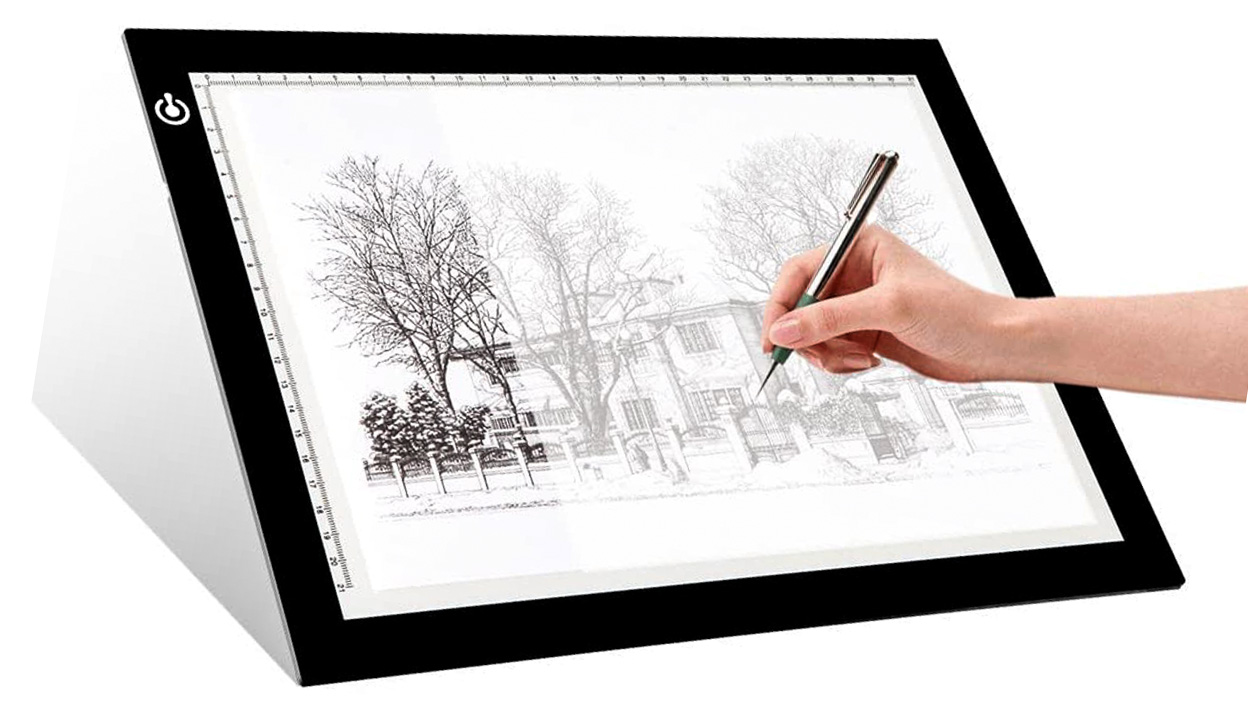
8. LitEnergy Portable LED lightbox
Specifications
Reasons to buy
Reasons to avoid
Want a cheap lightbox for tracing? With a 9x12-inch illuminated area, this fuss-free, budget priced light pad comes highly recommended. This ultra slim unit utilises a Mitsubishi acrylic panel that measures 14.2 x 10.6 x 0.2 inches, and comes surrounded by a classic black frame.
You can dim the maximum 4000 Lux brightness by simply pressing down on its power button for a few seconds. And thanks to a provided two-metre USB cable, it can be conveniently charged or powered via a laptop, USB enabled mains plug or portable charge. However, a mains plug will cost you extra.
Best long-life lightbox
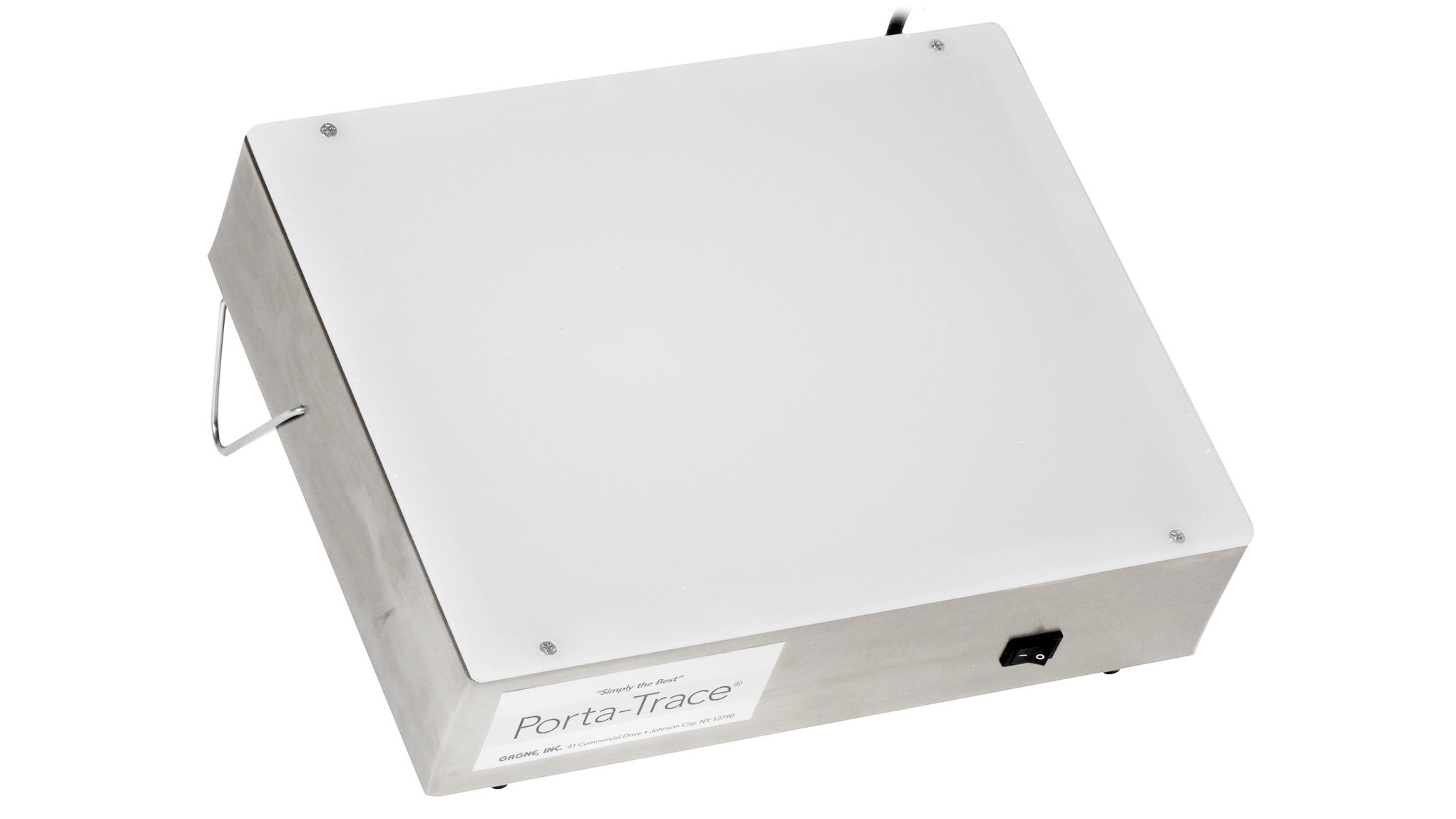
9. Porta-trace 1012 Stainless Steel Frame lightbox
Specifications
Reasons to buy
Reasons to avoid
This sturdily built classic lightbox that makes up in solidity what it perhaps lacks in portability. Resembling something you’d find in a laboratory, this stainless steel framed beast is LED powered with a claimed life of up to 50,000 hours and is said to be eco friendly. Made in the USA, it provides both an even light source across its 10 x 12-inch plexi glass surface and what it boasts is excellent color rendering, thanks to the use of white LED with a neutral color temperature. A provided adjustable metal stand lets the device be angled for greater convenience and easier viewing, and it comes with a three-year warranty.
How to choose the best lightbox
The best lightbox for you will depend on your specific needs and budget. Consider the amount of working area you're likely to need, as well as the available space in your workspace. Also consider the quality of the materials and construction, as well as the ease of assembly and disassembly. Look for adjustable brightness and color temperature to control lighting precisely. A lightbox with LED lights ensures energy efficiency and even illumination, while for ease of use, a USB-powered model offers convenience.
FAQs
What is a lightbox?
A lightbox is a device used to view slides, negatives transparencies, or other types of transparent materials, such as drawing paper. It typically consists of a box-shaped container with a transparent top or front, and an illuminated bottom or back. The light from the bottom creates a bright, evenly-lit surface that illuminates your material and makes it easier to see. Lightboxes are used by photographers, artists and illustrators.
How bright does my lightbox need to be?
If you plan on using it for drawing or tracing, you will want a light box that can produce at least 3000 lux so that the light can shine through 2 sheets of paper. If you are just using it for viewing film scans you will get away with 1,500-3,000 lux.
What size should I buy?
If you're planning on moving your lightbox around a lot it would be best to get one that could easily fit in a big - so no bigger than A4. For use at home or in the studio, an A2 or A3 light box will allow you to produce much larger drawings but they aren't very portable.
What do the size references A2, A3 and A4 mean?
There is an internationally defined standard for different paper sizes (ISO 216 for paper nerds), which uses the A prefix to indicate sizes, ranging from A1 from A10. The US, Canada and some other countries use a different system, with size names including Letter, Legal and Tabloid/Ledger.Roughly speaking, A4 is equivalent to Letter and A3 is equivalent to Tabloid/Ledger. Check the table below for the precise measurements.
Name | Millimeters | Inches |
|---|---|---|
Tabloid/Ledger | 279 x 432 mm | 11 x 17 in |
Letter | 216 x 279 mm | 8.5 x 11 in |
A2 | 420 x 594 mm | 16.5 x 23.4 in |
A3 | 297 x 420 mm | 11.7 x 16.5 in |
A4 | 210 x 297 mm | 8.3 x 11.7 in |
A5 | 148 x 210 mm | 5.8 x 8.3 in |
A magnifying device is a great accessory for lighboxes, check out our guide to the best loupes for suggestions.
Get the Digital Camera World Newsletter
The best camera deals, reviews, product advice, and unmissable photography news, direct to your inbox!
Gavin has over 30 years’ experience of writing about photography and television. He is currently the editor of British Photographic Industry News, and previously served as editor of Which Digital Camera and deputy editor of Total Digital Photography.
He has also written for a wide range of publications including T3, BBC Focus, Empire, NME, Radio Times, MacWorld, Computer Active, What Digital Camera and the Rough Guide books.
With his wealth of knowledge, Gavin is well placed to recognize great camera deals and recommend the best products in Digital Camera World’s buying guides. He also writes on a number of specialist subjects including binoculars and monoculars, spotting scopes, microscopes, trail cameras, action cameras, body cameras, filters and cameras straps.
